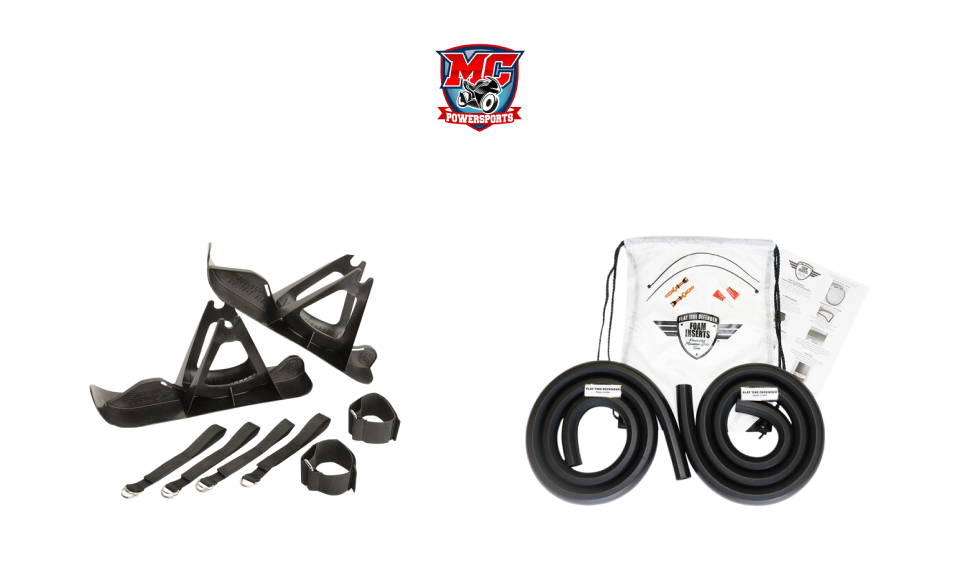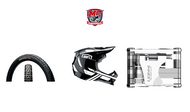Dirt Bike Trail Riding Tips for a Safe and Fun Adventure
Posted by undefined
People often talk about the sense of freedom that comes with motorcycle riding. Well, to take even that feeling up a notch, there is dirt bike trail riding. Truly, there is nothing as freeing as tearing through a dirt track, away from the hustle and bustle of roads, with no one around but you and your motorcycle (and, ideally, other riders with you). It is experiencing unadulterated freedom.
With that said, trail riding is a sport that demands respect and requires real skill. It's a physical challenge that can turn sour quickly if you're not prepared. That's why we've put together our essential tips to make sure your next dirt bike adventure is safe, fun, and leaves you wanting more.
1. The Pre-Ride Ritual: Gear and Inspection
Let's be honest, nobody wants to be "that guy" whose ride is cut short by a preventable mechanical issue, or worse, a preventable injury. Motorcycle riding gear is necessary even during city rides. When you're off on some dirt trail, far away from civilization, gear can become the wall that stands between you and disaster. Preparation is the unglamorous key to a glorious day on the trail.
Safety Gear: Your Non-Negotiable
While full-body armor is best for challenging tracks, here's what you should get:
- Quality motorcycle helmet that is full-faced and Snell-approved
- Durable goggles (unless your helmet has a visor, in which case you can skip goggles if you prefer)
- Proper dirt bike boots that protect your ankles and lower legs from impact, crushing injuries, and hot engine parts. This is one of the most important investments you will make
- Other essential items such as gloves, a long-sleeved jersey, riding pants, knee/shin guards, and a chest protector. You want to be protected from tip to tail
Ideally, you want to choose motorcycle accessories that boost safety and style.
The Bike Check: Look it Over!
Before the engine even warms up, do a quick but thorough inspection. A loose bolt or low tire pressure can ruin your day.
- Tires and Pressure: Check the pressure. Different terrains demand different pressures, but generally, lower pressure can give you better grip in soft or rocky conditions. Also, check for cuts or excessive wear.
- Fluids and Brakes: Is your gas tank full? Are engine oil and coolant levels good? Make sure both front and rear brakes are working perfectly. A smooth, responsive brake lever is your lifeline.
- Nuts and Bolts: Give the bike a once-over. Are the chain tension and lubrication correct? Are all visible bolts tight, especially on the handlebars, pegs, and wheels?
2. Master the Fundamentals: Body Position and Control
Trail riding isn't a leisurely cruise. You need to understand the motorcycle and have proper control of it. You cannot let the bike do all the work when your body is the most dynamic part of the suspension system. Knowing how to position yourself isn't just recommended; it's necessary for control and energy management.
Trail riding isn't a leisure cruise. Your body is the most dynamic part of the suspension system, and how you position yourself is vital for control and energy management.
Stand Up and Be Loose
When you're off-road, standing up on the pegs is recommended. In fact, 80% of the time, you should be standing. Squeeze the bike with your knees as it takes weight and stress off your hands, allowing for a lighter grip on the bars. Keep your elbows out and up, almost parallel to the ground, and ride with the balls of your feet on the pegs. This allows your ankles to act as suspension and makes it easier to shift your weight forward or back.
Smoothness is Speed
As you'd expect, a dirt bike doesn't work like a sports bike. Sure, the fundamentals remain the same. The throttle propels the bike forward, and the brakes help it come to a stop, but the way they're used varies.
On a trail, smoothness matters. The road is jerky and bumpy enough, so you want to keep the throttle smooth. Sudden twists can spin your rear tire and cause you to lose momentum and control. On a technical, slippery climb, a little consistent throttle is better than a lot of quick bursts.
Busting some motorcycling myths, you're actually supposed to use both brakes. It is a common belief that the front brake must not be used because, apparently, if applied too hard, you'll do a stoppie. If it were that easy, everyone would do it. The front brakes have, on average, far more braking power than the rear brakes.
The best balance is applying the front brakes slowly (to avoid washing out the wheel) while simultaneously applying the rear brake. Also, practice feathering the rear brake to control slides and set up for turns.

3. The Rider's Mindset: Awareness and Respect
Your skills and mindset together are what get you home. Be strong-willed and look ahead… way ahead. Fixated driving results in a disaster. So, if there is a log in front of you, and you're driving whilst being fixated upon it, that is where you'll end up. Look where you want to go.
Knowing Your Limits
An important mindset is knowing when you or your motorcycle has had enough. If a section looks beyond your skills or you think your motorcycle cannot bear the beat, it is best to back off. Overconfidence is one of the common mistakes every motorcycle rider should avoid.
Trail Etiquette
Nobody owns the trail, hikers or fellow riders. Whilst riding, you are representing the riding community. When passing hikers or equestrians, slow down, be polite, and remember they have the right of way. Give other riders space, and offer a hand if someone is in trouble. We're all part of the same community.
4. Never Ride Alone (or at least, be prepared to)
The golden rule of trail riding is, put simply, to not do it alone. Have a riding buddy with you at all times, not just because it's more fun but because they're going to be the first responder in case something goes wrong.
If you absolutely must ride solo, tell someone and carry a small backpack with both first aid as well as basic tools.
Conclusion: Respect the Trail, Enjoy the Ride
Dirt bike trail riding offers an unparalleled sense of accomplishment and freedom. It's a sport that connects you directly to the environment and challenges you both physically and mentally. By committing to the essentials, wearing proper safety gear, performing that crucial pre-ride inspection, maintaining disciplined body positioning, and always respecting the trail and fellow users, you make sure that the thrill of the ride is matched by its safety.
The dirt is waiting. Go hit those trails with confidence, stay smooth on the throttle, look ahead, and remember that the safest ride is always the most fun. See you out there!
Frequently Asked Questions
Q: What is the single most important piece of gear for a trail rider?
A: While the entire set of gear is non-negotiable, a high-quality, properly fitted helmet is the most critical piece of safety equipment. Closely following are proper dirt bike boots, which protect your ankles and feet from the bike's weight and obstacles.
Q: How much tire pressure should I use for trail riding?
A: This depends heavily on your bike, tires, and terrain. Generally, trail riders use lower pressures than motocross riders to maximize traction and absorb impact. A good starting point for soft or rocky trails might be between 10–15 psi, but always check your tire manufacturer's recommendations and experiment to find what feels safest and best for your specific conditions.
Q: Should I sit or stand while riding the trails?
A: You should be standing on the pegs about 80% of the time on the trails. Standing allows your legs to act as a shock absorber, lowers your center of gravity relative to the bike, and gives you better leverage and control for maneuvering over obstacles. Save sitting for smooth, straighter sections where you can rest.

